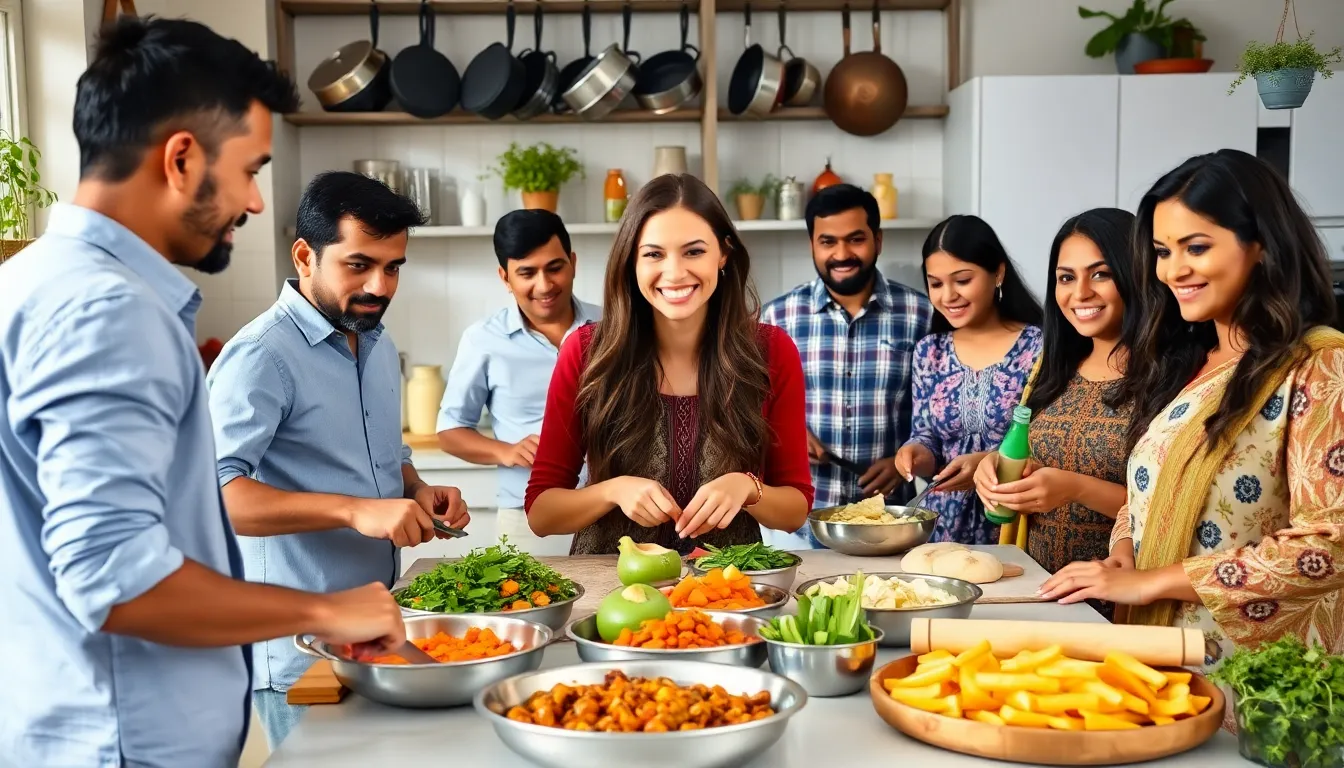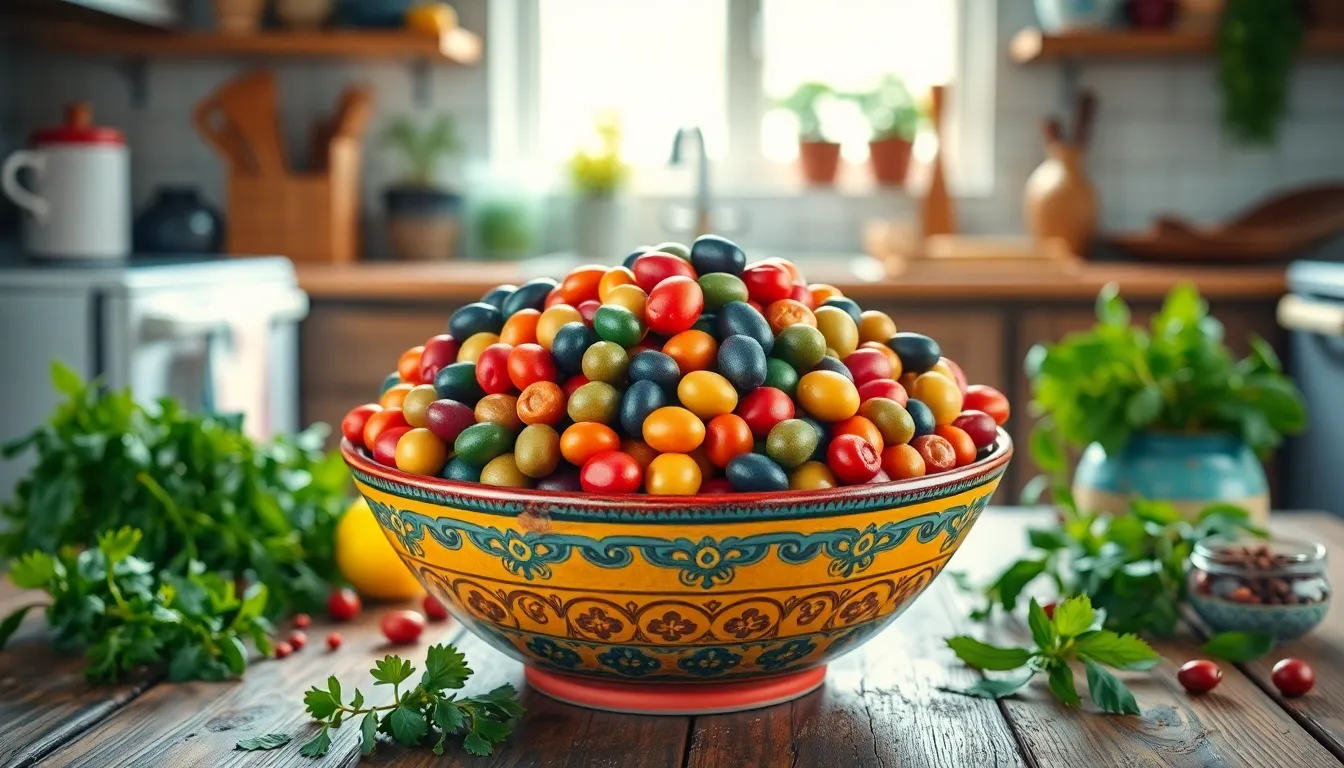Indian cooking techniques are a delicious blend of art and science, transforming humble ingredients into culinary masterpieces. From the sizzling sound of spices hitting hot oil to the fragrant aroma wafting through the kitchen, these methods bring a symphony of flavors to life. Whether it’s mastering the perfect curry or getting that naan just right, Indian cooking is an adventure that tickles the taste buds and warms the soul.
But don’t worry, you don’t need to be a Bollywood star to whip up these mouthwatering dishes. With a pinch of patience and a dash of humor, anyone can dive into the vibrant world of Indian cuisine. So roll up those sleeves, grab your spices, and get ready to impress your friends (or at least make them laugh) as you explore the fascinating techniques that make Indian cooking so irresistible.
Table of Contents
ToggleOverview Of Indian Cooking Techniques
Indian cooking techniques encompass a variety of methods that enhance the flavors and textures of dishes. The methods include boiling, steaming, frying, and baking, each offering unique benefits and outcomes.
Boiling serves as a fundamental technique, often used for preparing lentils and vegetables. Cooking lentils in boiling water softens them, making them easier to digest. Steaming, another common method, preserves nutrients while infusing a light flavor into the food.
Frying, whether shallow or deep, creates rich textures. This technique allows spices to develop their full aroma, enhancing the dishes significantly. Tadka, a type of tempering, involves frying spices in oil before adding them to a curry, infusing the dish with depth.
Baking holds a significant place in Indian cooking, particularly with flatbreads. Tandoor ovens produce naan and roti with a characteristic smoky flavor and chewy texture.
Roasting, often used for spices and meats, brings out a complex flavor profile. Whole spices like cumin and coriander release essential oils when roasted, intensifying their taste.
Grilling also features prominently, showcasing meats and paneer. The direct heat caramelizes the exterior while keeping the insides moist.
Additionally, marination plays a crucial role, allowing proteins to absorb flavors before cooking. A variety of marinades, such as yogurt-based ones, tenderize while infusing bold spices.
Understanding these techniques enriches the culinary experience. Each method connects the ingredients, allowing the cook to master traditional Indian dishes. Embracing these techniques facilitates the creation of memorable meals.
Types Of Indian Cooking Techniques
Indian cooking techniques can be broadly classified into dry and wet methods. Each technique contributes unique textures and flavors to dishes.
Dry Cooking Techniques
Dry cooking techniques enhance flavors through direct heat. Roasting, for example, develops complex flavors in spices and vegetables. Grilling over an open flame imparts a smoky aroma to meats and skewers, essential for dishes like tandoori chicken. Sautéing releases essential oils from spices, creating a rich base for curries. Additionally, stir-frying emphasizes crisp textures in vegetables, retaining nutrients while adding vibrant colors. Each technique showcases ingredients, transforming simple components into aromatic and flavorful masterpieces.
Wet Cooking Techniques
Wet cooking techniques focus on adding moisture, resulting in tender and flavorful meals. Boiling softens lentils and vegetables, forming the basis for soups and dals. Steaming, on the other hand, maintains nutrients, allowing dishes like idli to shine with their fluffy texture. Braising combines moisture with low heat, perfect for cooking meats slowly until tender. Moreover, poaching preserves delicate proteins, imparting subtle flavors with spices and herbs. These techniques create a rich tapestry of tastes and textures, highlighting the versatility of Indian cuisine.
Common Cooking Methods
Indian cooking employs various techniques that enhance flavors and textures, making each dish unique. Understanding these methods allows home cooks to embrace the full breadth of Indian cuisine.
Sautéing
Sautéing involves quickly frying ingredients in a small amount of oil over high heat. This method cooks vegetables and proteins while retaining their color and crunch. Cooks often add spices during sautéing to release their essential oils, amplifying flavors in curries and stir-fries. Common ingredients like onions, garlic, and ginger often kickstart the flavor profile, creating aromatic bases for many dishes.
Steaming
Steaming is a gentle cooking method ideal for preserving nutrients and enhancing the natural taste of ingredients. In Indian cuisine, this technique is used for cooking rice, vegetables, and dumplings like idlis and modaks. Steaming maintains moisture and flavor while avoiding the use of excess oils. Cooks typically use a bamboo steamer or a steaming basket to facilitate this method, ensuring even cooking and a wholesome texture.
Frying
Frying, whether deep or shallow, imbues dishes with rich flavor and crispy texture. This method is popular for preparing snacks like samosas and pakoras, where the outer layer becomes golden and crunchy. Oils used in frying can add distinctive tastes depending on their types. Careful temperature control ensures that food cooks evenly and avoids absorbing too much oil, enhancing the overall dish without compromising health.
Baking
Baking brings a unique element to Indian cooking, especially in bread-making. Traditional items like naan and roti benefit from oven baking, which creates a delightful char and chewy texture. Bakers often use a tandoor to achieve a smoky flavor, enhancing the final product. Additionally, various sweets like cake and halwa are baked to provide a different dimension, connecting traditional methods with modern cooking techniques.
Regional Variations In Techniques
Indian cooking techniques differ significantly across various regions. Each region showcases unique ingredients and methods, highlighting cultural diversity.
North Indian Techniques
North Indian cooking techniques emphasize the use of dairy and spices. Tandoor cooking is prevalent, where ingredients like naan and meats receive a distinct charred flavor. Curries often utilize gravy-based approaches, allowing spices and herbs to infuse richly. Sautéing and frying remain popular, enhancing flavors in dishes like paneer tikka and biryani. Additionally, slow cooking techniques, such as dum cooking, allow for deeper flavor profiles in complex dishes.
South Indian Techniques
South Indian cooking techniques focus on rice and legumes as staple ingredients. Steaming plays a crucial role in preparing idlis and dosas, retaining flavor and nutrients. Tempering spices in oil, known as tadka, brings out complex flavors in dishes like sambar and rasam. Coconut usage is common, adding richness to many recipes. Fermentation techniques, especially in batters, create unique textures and tastes, making South Indian cuisine distinctive and vibrant.
Exploring Indian cooking techniques opens up a world of flavors and culinary creativity. Each method offers unique ways to enhance ingredients and create unforgettable dishes. From the vibrant spices of North India to the rich textures of South Indian cuisine, these techniques reflect the country’s diverse culture.
Embracing these methods not only enriches the cooking experience but also connects individuals with tradition and heritage. With practice and a dash of humor, anyone can master these techniques and enjoy the delightful journey of Indian cooking. Ultimately, it’s about savoring the process and sharing delicious meals with loved ones.




